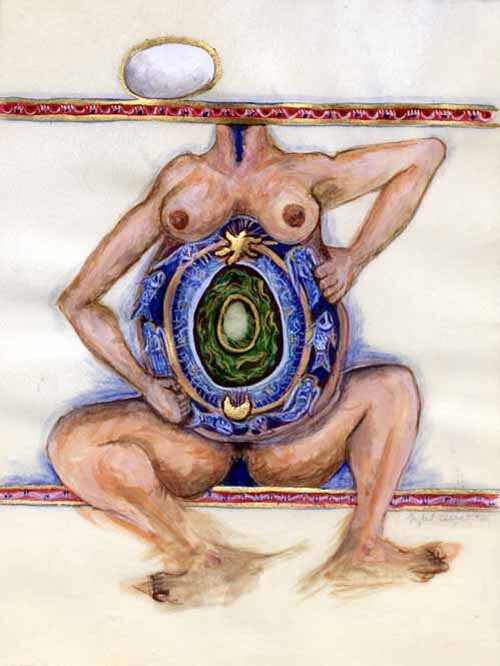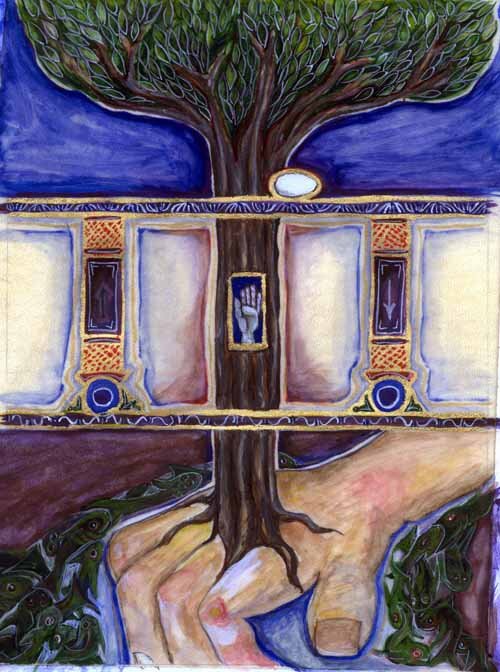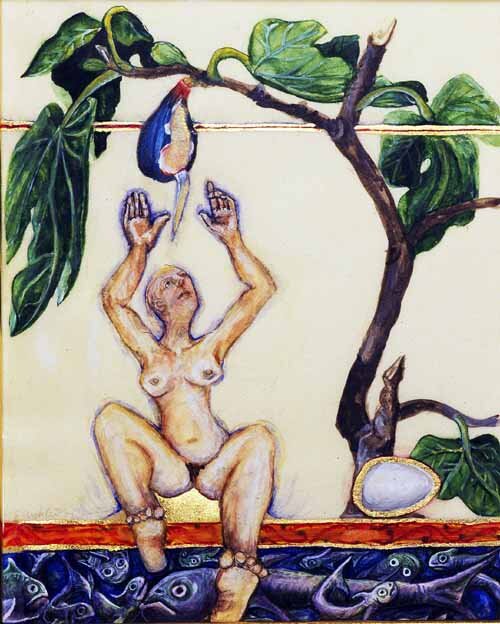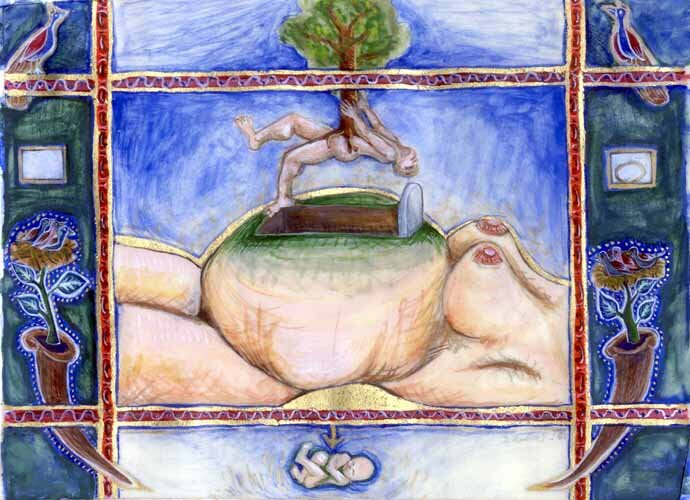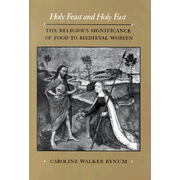Pieces from The Alchemist series, 22k Gold Leaf and handmade paints on sheep skin parchment
So today I’m allowed to lift my arm for the first time in a week. I still have to wait to lift it above my shoulder, but this is a happy day nonetheless! I also feel new energy and purpose.
Yesterday I spoke about holding the space open for the Divine to enter. It’s interesting, more happens when I wait and things that were unclear become clear. My family & I have thought for sometime of being away for part of the winter. Nothing was coming together so I sat back and waited. Now something wonderful has entered into that open space. It is a one month trip to sunny St. Thomas which I am going to use as an artist's retreat. I’ll be packing a small bag of clothes, a large trunk of art supplies and my laptop.Where I live just outside of New York City, I often feel disconnected from nature. Illness works on many levels it is most definitely spiritual direction on a personal level. But I have often wondered if it is something more too. Our bodies are the Earth. Creation stories from many peoples Apache , China, Aboriginal , African and of course the biblical story of Adam to name a few describe humanity as being created out of Earth. I have always felt that on some level my illness reflects the illness and decay of our planet. I firmly believe in the alchemical principle “As above, so below”. If we are pale reflections, echoes of our Creator, as physical creatures we must also be the echo of creation itself. Our blatant disregard for our own flesh must be on some level both manifestation and cause of the current plight of our dear planet.So I will take my time in the lush tropical greenery of St. Thomas to enter into the act of creation through my art and writing, but also to envelope my body in its physical source, nature. Like a child estranged from its parent, my body will find healing in the Earth’s loving arms.I have learned that I cannot control the illness in my body, greater forces than I can understand have plans for me for which I gladly wait. But I take heart. I believe physical healing is possible. I have always believed it and will continue my belief whether or not physical healing becomes part of my own path. What small steps I can take like resting, using my energy wisely, eating well or nurturing myself do have an effect. I must treat myself as if I were my own garden and this in turn must effect the Earth. My flesh is the land, it is Earth and the two cannot be separated except as an illusion in the human mind. My flesh is but a small grain of sand, but as I have said before, sand does have a way of piling up. The small ways in which we heal ourselves will begin the process of healing our planet.
Hail Mary enter my hands
Full of Grace
- fill me
Blessed art thou among women
-flesh joined with spirit, Earthoh endless Divine Womb
Blessed is the fruit of thy womb Jesus
-perfected jewel of creation present in every moment
Holy Mary mother of God
-ancient well, connect me to Your eternal stream
Pray for us sinners now
-let us heal the connection that has been sundered
and at the time
-circle upon circle
of our death.
-bring us lasting rebirth: flesh at with one spirit
-Sybil Archibald

